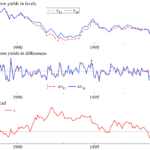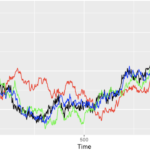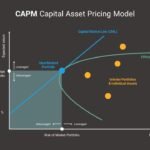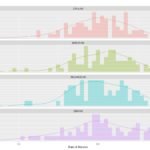Understanding Simple Linear Regression
Econometrics plays a pivotal role in the realm of economics by equipping researchers with essential tools for modeling based on empirical data. Among these tools, the technique of regression analysis stands out as a fundamental and versatile method. It serves as the cornerstone for understanding relationships, making predictions, and deriving valuable insights from economic data. Linear vs. Non-Linear Regression Analysis Regression models can be broadly classified into two categories: linear and non-linear. Linear regression analysis and non-linear regression analysis are the primary subfields within this domain. In this discussion, we will primarily focus on the intricacies of linear regression analysis. Linear regression analysis is a powerful statistical method employed in econometrics to establish relationships between variables in a linear fashion. Its primary objective is to fit a linear regression model to a given dataset, enabling economists and researchers to gain a deeper understanding of the underlying dynamics. What is Simple Linear Regression? Simple linear regression is a statistical method used to model the relationship between two variables: one independent variable (predictor) and one dependent variable (response). It’s a straightforward approach to understanding how changes in the independent variable influence the dependent variable. Think of it as a way to draw a straight line through data points, making predictions based on this linear relationship. At the heart of linear regression lies a fundamental distinction between two key variable types: the dependent variable (often referred to as the study variable), denoted as ‘y,’ and independent variables (also known as explanatory variables), denoted as ‘X,’ ‘X1,’ ‘X2,’ and so forth. The dependent variable ‘y’ is the focal point of our analysis, representing the outcome we aim to elucidate or predict. In contrast, independent variables ‘X’ encapsulate various factors that hold the potential to influence ‘y.’ Key Components Simple linear regression involves the following key components: Linearity vs. Non-Linearity: The core of understanding linearity in regression analysis lies in assessing the relationship between ‘y’ and the model parameters (‘β_0,’ ‘β_1,’ ‘β_2,’ …, ‘β_k’). Specifically, a model is deemed linear if all partial derivatives of ‘y’ with respect to each parameter remain independent of those parameters. Conversely, if any derivative depends on the parameters, the model is classified as non-linear. It’s vital to note that this classification pertains to the parameters themselves, not the independent variables. Linear Regression Equation with Interaction Terms: We can extend the linear regression equation to include interaction terms. Interaction terms capture the joint influence of two or more independent variables on the dependent variable. The equation takes this form: Here, the ‘β_3’ term quantifies how the interaction between ‘X_1’ and ‘X_2’ contributes to changes in ‘y.’ Multiple Linear Regression: The multiple linear regression equation accommodates multiple independent variables simultaneously. It expands the equation to encompass ‘p’ independent variables: The coefficients ‘β_1’ through ‘β_p’ measure the impact of each respective independent variable ‘X_1’ through ‘X_p’ on the dependent variable ‘y.’ Polynomial Regression: In situations where the relationship between ‘y’ and ‘X’ is nonlinear, polynomial regression steps in. It introduces higher-order terms of the independent variables to capture nonlinear patterns. The equation can extend to include quadratic terms: Here, ‘X_1^2’ represents the squared term of ‘X_1,’ allowing the model to capture curvature in the relationship. Use Cases and Applications Simple linear regression finds applications in various fields, including: The Process of Simple Linear Regression We’ll now break down the essential concepts of linear regression and dive deep into each step of the process. Step 1: Define the Problem The first thing we need to do is clearly state the problem we want to solve. What are we trying to find out, and what do we want to achieve with our analysis? Defining the problem sets the stage for everything that follows. Step 2: Choose the Right Variables Next, we need to pick the right things to study. These are called variables. Some variables are the ones we want to understand better (we call this the dependent variable), and others are factors that might affect our main variable (we call these independent variables). Step 3: Collect Good Data Having good information is crucial. We need to gather data on our chosen variables accurately. The data should be relevant and reliable, meaning it should give us a true picture of what we’re studying. Step 4: Create the Model Now, we come to the heart of linear regression: creating a model. A model is like a math equation that tells us how our dependent variable is connected to our independent variables. In a simple form, it looks like this: Step 5: Figure Out the Numbers To get our model ready, we need to figure out the values of β₀ and β₁. This is where math comes in. There are different methods for finding these numbers, such as the least-squares method, which aims to make our model as accurate as possible. Step 6: Fit the Model Once we have our numbers, we put them into our model equation. This is like fitting a puzzle piece into its place. The model is now ready to help us understand the relationship between our variables. Step 7: Check the Model We need to make sure our model is doing a good job. To do this, we check if it follows certain rules and assumptions. If it doesn’t, we might need to make some adjustments or consider a different approach. Step 8: Use the Model Finally, we can use our model to make predictions or draw conclusions. For example, if we were studying how the amount of sunlight affects plant growth, our model could help us predict how tall a plant might grow based on how much sunlight it gets. Objectives of Regression Analysis Regression analysis serves several pivotal objectives: – Relationship Exploration: It uncovers and quantifies relationships between the dependent variable ‘y’ and the independent variable ‘X.’ This exploration empowers researchers to gain valuable insights into the influencing factors. – Prediction: Fitted regression models enable accurate prediction. Once the parameters are estimated, you can forecast ‘y’ values for
Understanding Simple Linear Regression Read More »



